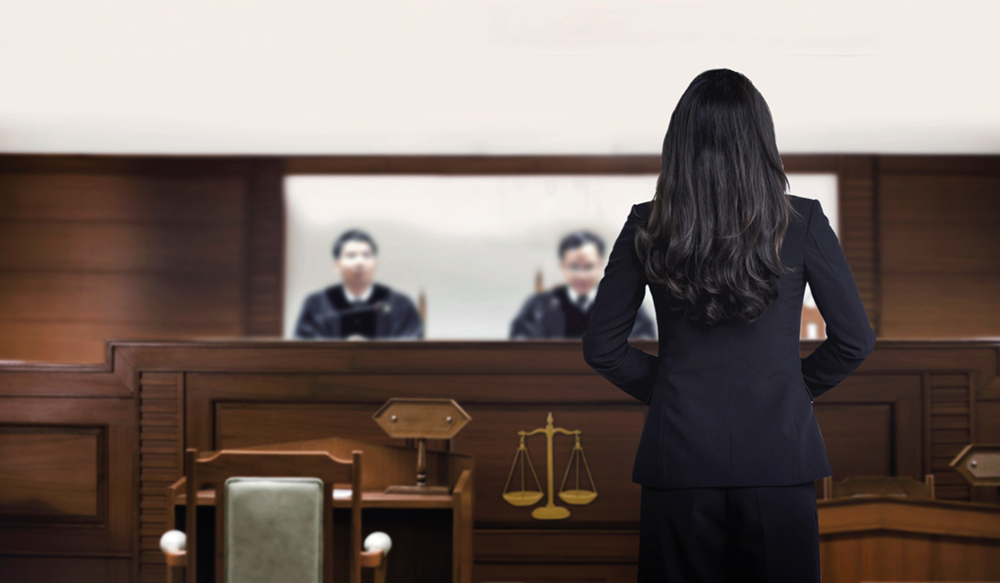Just how to Improve Your Case with Compelling Trial Presentations: Specialist Tips for Lawyers
Navigating the Complexities of Test Presentations: Tips for Seamless Delivery and Compelling Disagreements
In the realm of legal process, the art of test discussion stands as an important component of success. The complexities fundamental in test presentations call for a delicate balance of skill, strategy, and skill.

Comprehending Trial Objectives
To efficiently browse a test, it is important to have a clear understanding of the objectives that require to be accomplished. Before entering the courtroom, lawful groups must specify their objectives and desired results. These purposes offer as directing concepts throughout the test, forming techniques and influencing decision-making processes.
Understanding test purposes involves an extensive evaluation of the situation, lawful precedents, and the customer's benefits. Trial Presentations. It calls for a careful evaluation of the facts, determining key issues, and expecting potential obstacles. By setting quantifiable and particular objectives, attorneys can customize their presentations and arguments to align with the desired results
Moreover, a clear understanding of trial goals makes it possible for legal teams to focus on proof, witnesses, and lawful debates properly. It allows for the growth of a coherent story that reverberates with the judge and jury, strengthening the overall situation presentation.

Organizing Evidence Effectively
Having a clear understanding of test goals lays the foundation for arranging evidence properly in legal procedures - Trial Presentations. By lining up the discussion of evidence with the wanted outcomes of the test, legal groups can strengthen their debates and enhance their persuasiveness. One crucial facet of organizing proof is categorization. Grouping evidence based upon themes or significance to particular legal elements can assist enhance the presentation and make complex info a lot more digestible for the court or jury.
Another secret aspect in arranging proof efficiently is developing a sensible circulation. Offering proof in a sequential and systematic fashion can aid construct an engaging story that supports the legal arguments being made. Furthermore, utilizing visual aids such as timelines, charts, or graphs can even more improve the company of evidence and help in making clear complex connections or series of events.
Additionally, making certain that all evidence presented is acceptable and pertinent to the situation is crucial. Inadmissible or pointless proof can interfere with the strength of the debate and possibly harm the trustworthiness of the here and now event. A careful evaluation and choice procedure must read this article be embarked on to consist of just the most lawfully sound and impactful evidence in the trial discussion.
Crafting Influential Stories
Crafting compelling stories plays a critical role in providing persuasive debates during lawful procedures. When creating a narrative for a test presentation, it is essential to develop a clear storyline that highlights crucial points and links them in a coherent way. By weaving with each other evidence, testament, and legal debates into a convincing and natural narrative, lawful professionals can successfully support for their clients and raise the possibility of a desirable outcome in the court.
Understanding Visual Aids
Reliable use of visual help is key to improving the influence and quality of trial presentations. Aesthetic help, when utilized tactically, have the power to streamline complex information, strengthen vital points, and leave a long lasting perception on the court and court. To master visual aids in trial discussions, it is critical to guarantee that they are clear, concise, and appropriate to the debates being made.
When including visual aids, such as charts, timelines, pictures, or charts, into a trial presentation, it is vital to keep them visually appealing yet expert. The visuals must match the spoken disagreements, supplying a graph of the info being gone over without overwhelming the audience with unnecessary details.
Moreover, exercising with the aesthetic help ahead of time is essential to ensure a seamless distribution throughout the test. Familiarizing oneself with the content, transitions, and timings of each aesthetic help can assist preserve the flow of the discussion and protect against technological glitches that might emerge.
Supplying Impactful Closing Disagreements
An engaging closing debate serves as the conclusion of a test discussion, encapsulating the core narrative and convincing the judge and court in the direction of a positive choice. Begin by describing the major disagreements that sustain your client's setting, stressing why the evidence offered throughout the test supports your story.
Moreover, integrating psychological charm can better strengthen your closing disagreement. By humanizing the instance and connecting on a personal level with the decision-makers, you can stimulate compassion and understanding, influencing their understanding of the truths offered. Additionally, repeating the lawful criteria that check here should be satisfied for a desirable judgment can reinforce the credibility of your setting. Inevitably, a well-crafted closing debate should leave a long lasting perception, engaging the court and court to regulation in your client's favor.
Conclusion
Finally, grasping trial presentations involves understanding objectives, organizing proof, crafting stories, making use of aesthetic help, and providing impactful closing disagreements. By carrying out these methods successfully, attorneys can provide their case perfectly and make compelling debates in the court room. It is critical to browse the intricacies of trial presentations with accuracy and ability to accomplish success in legal proceedings.
By straightening the discussion of evidence with the desired end results of the test, legal teams can strengthen their debates and boost their persuasiveness (Trial Presentations). To grasp visual help browse around this site in test presentations, it is crucial to make certain that they are clear, succinct, and relevant to the debates being made
An engaging closing disagreement offers as the conclusion of a trial discussion, enveloping the core narrative and encouraging the judge and court in the direction of a beneficial choice. Begin by detailing the main debates that support your customer's setting, emphasizing why the proof presented throughout the test supports your story.In conclusion, understanding trial discussions includes recognizing goals, arranging evidence, crafting stories, using aesthetic aids, and supplying impactful closing arguments.